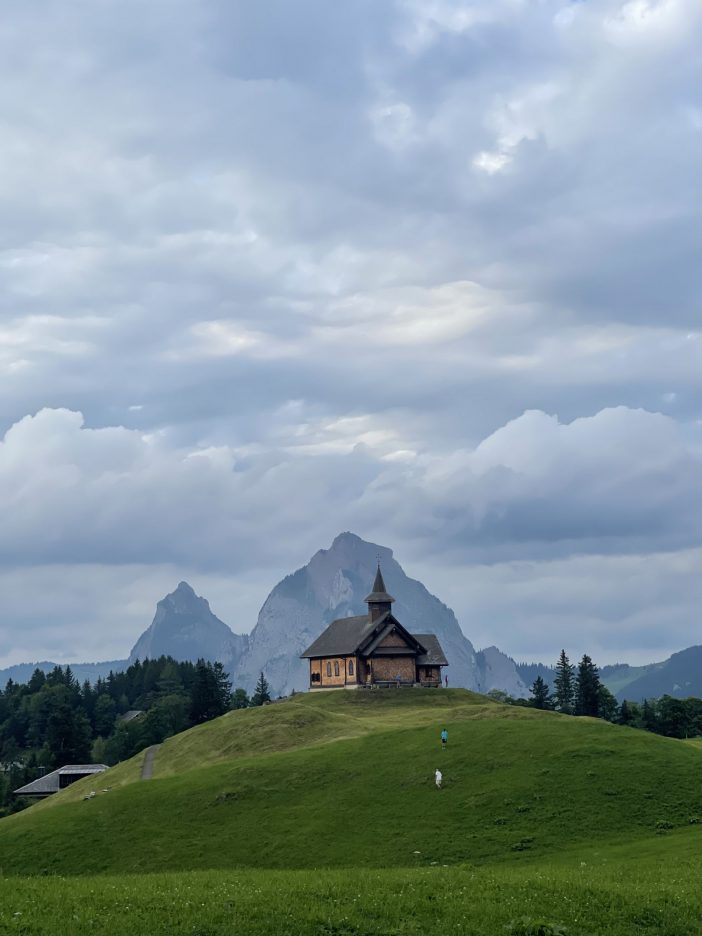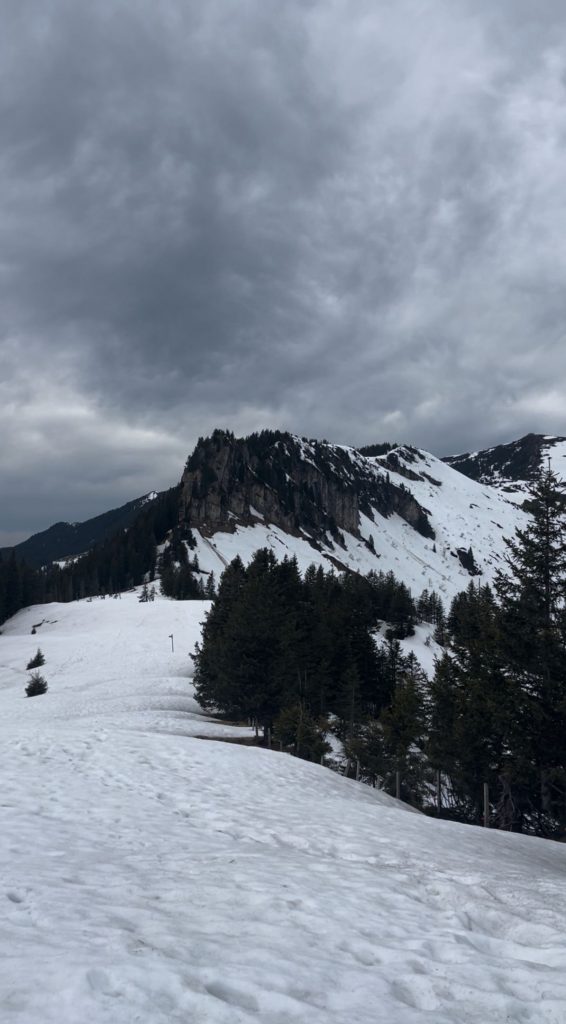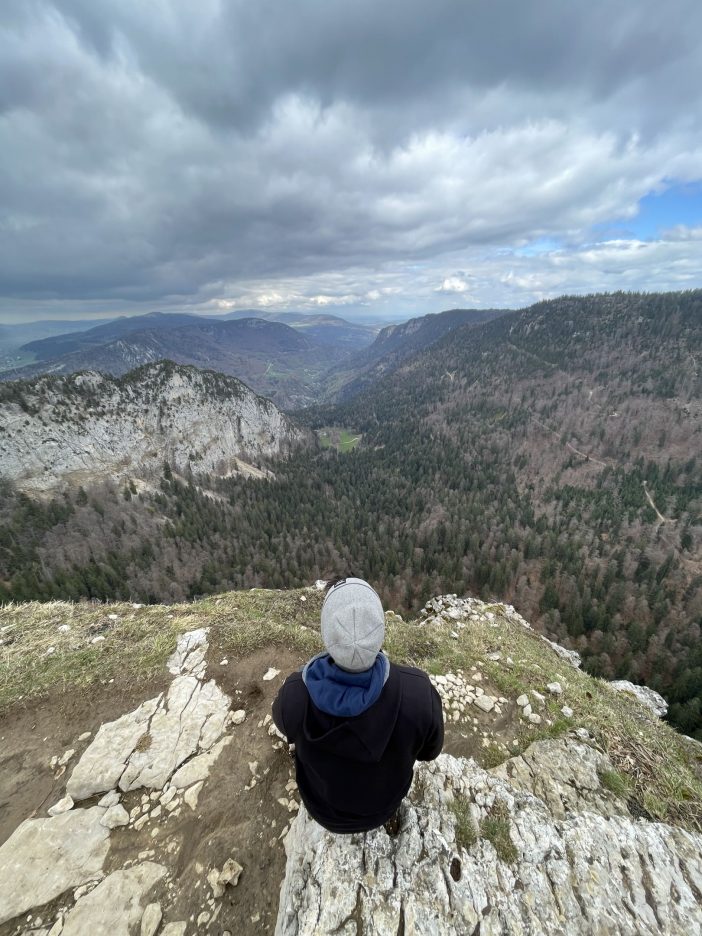This is the last post in my swissmythhikes series — and instead of taking you on another hike through fog, ice, or legends, I want to share what helped me get there in the first place.
Because behind every photo, behind every trail and story, there’s a quiet kind of work: planning.
So if you’re thinking about organizing your own hike in Switzerland, here are the tools, tips, and tiny lessons I learned — step by step.

📍 1. Plan Your Route (And Then Plan It Again)
One of the most helpful tools I used throughout this series was the SwissTopo app. It’s more than just a map — it’s a full digital guide to Switzerland’s topography.
With SwissTopo, you can:
✅ View detailed topographic maps of all of Switzerland
✅ Create and customize your own hiking route — shorten or extend it based on your needs
✅ Track your real-time location on the trail (as long as GPS is active)
✅ Download your planned map for offline use — perfect if you’re heading into areas without signal
The app also shows trail difficulty using color codes:
-
🟡 Yellow = easy
-
🔴 Red = medium difficulty
-
🔵 Blue = alpine routes (for experienced hikers only)
This app gave me the confidence to try new trails — even in remote areas — while staying aware of my limits.
🌦️ 2. Watch the Weather (Really. Don’t Skip This.)
Weather in the Swiss Alps can change fast — especially as you hike higher. What starts as sunshine can quickly turn into wind, fog, or even snow. That’s why checking the weather forecast is something I never skip before a hike.
My go-to tool was the Swiss Meteo app, which gives accurate, location-based mountain forecasts. I usually check:
-
🌧️ Rain or thunderstorms
-
🌬️ Wind speed at higher altitudes
-
❄️ Snow line (especially in early summer or autumn)
📌 Pro tip:
It is also important to consider the current mountain conditions, check the live webcams located on or near the peaks of your hiking area. Many popular regions have real-time webcam feeds showing exactly what the summit or trail looks like right at that moment.
All you have to do is type the name of the mountain or region + “live webcam” into your search engine, and you’ll usually find a direct view of what’s happening there.

🥾 3. Know Your Limits — and Be Flexible
Once you’ve created your route and checked the weather, the next step is just as important: knowing your limits.
It’s not just about the distance you see on the map.
Make sure to also factor in your travel time to and from the trailhead, your fitness level, and how much energy you’ll have left at the end of the day.
⏱️ A 15 km trail might not sound like much — but if it’s steep, at high altitude, and after a long train ride, it can easily become exhausting.
🧠 Also, one of the most important rules of mountain hiking:
Never go alone without telling someone.
Either hike with a partner, or make sure at least one person knows where you are and when you expect to return.
This small step can make a big difference in case something goes wrong.

🍫 4. Pack Smart (But Not Too Heavy)
Packing for a hike doesn’t mean carrying your whole house — but it also doesn’t mean traveling too light. The right items can make your day safer and much more comfortable.
Here’s what I always bring:
✅ Water – This is non-negotiable. On many trails, there are no places to refill your bottle, so make sure you carry enough — especially on longer hikes.
✅ Snacks – I prefer a mix of nuts, fruit, and one or two energy bars.
✅ Towel or small cloth – After hiking for a while, you’ll sweat. And if you take a break while soaked in sweat, you might get sick. I always keep a towel to dry off before longer rests.
✅ Spare clothes – I usually take at least two extra t-shirts, and something warm like a light jacket or hoodie.
✅ Layers – Weather can change quickly, so dress smart.
✅ Power bank + offline map
✅ Sunscreen and sunglasses
I don’t take long breaks often, but I do plan my routes to pass by at least one mountain hut or restaurant. That way, I can sit down, change clothes if needed, eat something warm, and continue with more energy.
👣 5. Walk for the Story, Not the Stats
One of the most important things I’ve learned during this series is this:
Hiking isn’t about breaking records — it’s about what stays with you afterward.
You don’t have to reach the summit or finish the trail in record time.
Sometimes, the most meaningful moments happen halfway through:
-
A quiet bench with a view you didn’t expect.
-
A marmot suddenly crossing your path.
-
A strange silence that makes you feel like the mountain is telling you something.

🌄 From My Trails to Yours
Writing this series changed how I see the mountains. It made me slower, more curious, more open. And if even one of these hikes inspired you to step outside — then that’s already a win.
This was the last chapter of my swissmythhikes journey.
But maybe it’s just the beginning of yours.
If you’re curious to explore the legends, peaks, and paths I’ve followed, here are the full stories:
🙋 Need Help Planning Your Own Hike?
If you’re inspired to start your own hiking journey through Switzerland and don’t know where to begin — I’d be happy to help.
Whether it’s trail suggestions, app tips, or a bit of encouragement, feel free to reach out.
📩 DM me or tag me on Instagram: @swissmythhikes
Let’s walk your story, one trail at a time. 🌄




Incredibly beautiful places. The landscapes are mesmerizing. I think this view will be even more beautiful with a team of 3-5 people. 🙂
Danke viel Mals!!!
Sehr hilfreiche Tipps und sehr ausführlich beschrieben!!!
Ich werde es auf jeden Fall verwenden!!!
What a beautiful way to close the series — not with another destination, but with the wisdom behind the journey. This post is full of heart, but also incredibly practical. I love how you balanced poetic reflection with real-world tips that every hiker can use. “Walk for the story, not the stats” — that line hit deep. It’s a reminder that nature isn’t a competition, it’s a conversation. Thank you for sharing not just the trails, but the mindset that made them meaningful.
Such an insightful guide! Your packing list is spot-on; it’s always a fine balance between not overpacking but being prepared. And the point about walking for the experience, not the stats, really resonates with me. I’ve had some of my best moments on the trail when I wasn’t rushing to the finish line but just soaking in the surroundings. Thanks for sharing these tips!
I will really miss your blogs!
Really appreciate the emphasis on planning — it’s so easy to romanticize hiking without realizing how crucial route mapping and weather checks are, especially in a place as unpredictable as the Alps. I hadn’t considered using color-coded trail difficulty as a confidence booster, but that insight alone makes a big difference when venturing beyond familiar paths.